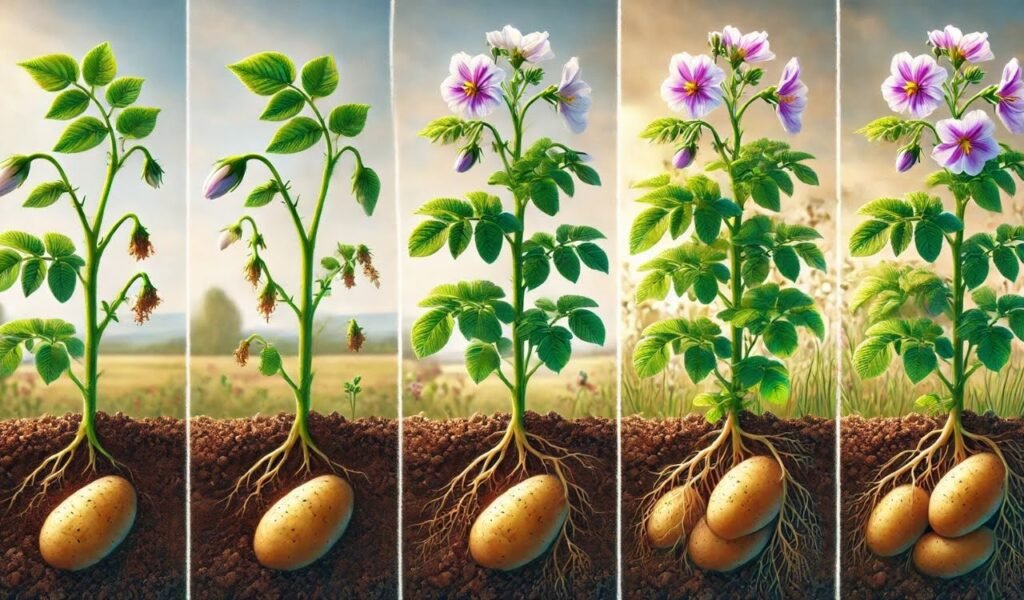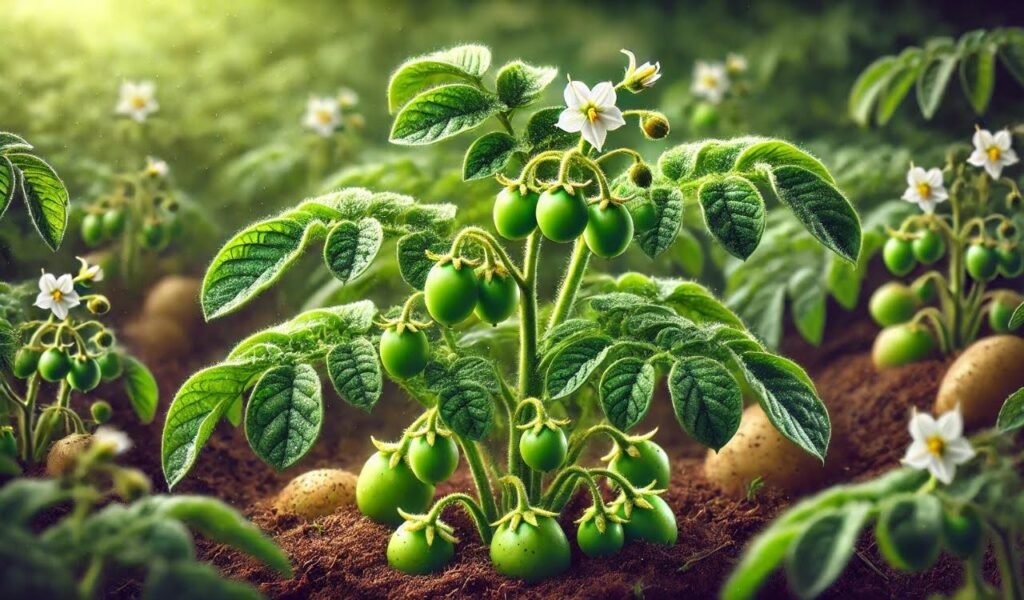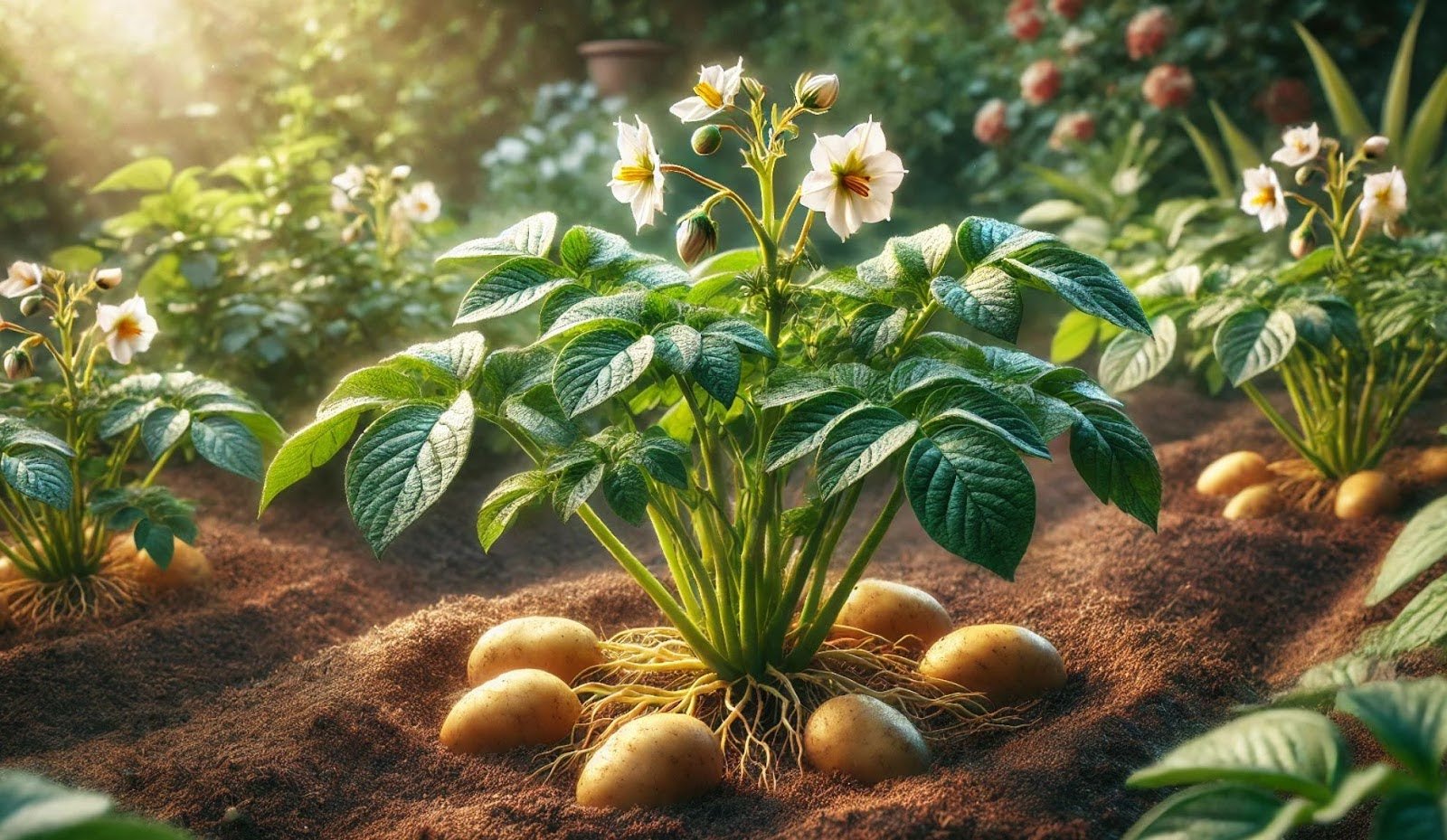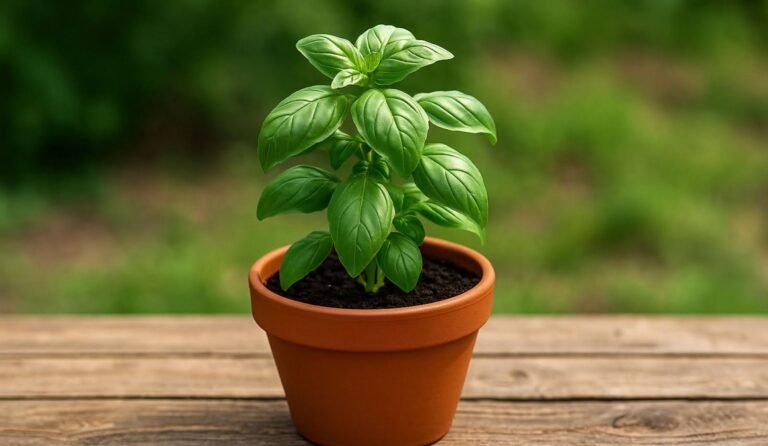What Does a Potato Plant Look Like at Every Growth Stage?
What does a potato plant look like? It’s not just a lump of potatoes sitting in the dirt! Above ground, you’ll see lush green leaves, sturdy stems, and even delicate flowers, while underground, the real action happens—potatoes growing beneath the soil. Some plants even produce small, tomato-like fruit (spoiler: they’re not edible!). If you’re thinking about growing potatoes or just curious, this guide will show you exactly what to expect. Let’s dig in!
Understanding the Appearance of a Potato Plant
What does a potato plant look like? A potato plant is a bushy, leafy green plant with multiple stems growing from a single seed potato. When fully grown, it looks similar to a small shrub. The leaves are bright green and broad, with an oval or lance shape.
They are arranged in an alternating pattern along the stems, which can vary in color from green to purplish, depending on the variety.
Above ground, the plant produces stems and foliage, while below ground, it develops an extensive root system and tubers—the actual potatoes. As the plant matures, it may also produce small flowers in white, pink, purple, or blue shades.
These flowers sometimes develop into small green fruit that resemble tiny tomatoes. However, these fruits are not edible, as they contain toxic compounds.
A fully grown potato plant can reach between 12 to 36 inches in height, depending on the variety and growing conditions. The stems do not climb like traditional vines but may spread outward if not supported. While some varieties have trailing stems that resemble vines, they do not attach to surfaces like climbing plants.
The Growth Stages of a Potato Plant

Potato plants go through several distinct growth stages before they are ready for harvest. Understanding these stages can help you monitor your plants’ progress and ensure they get the right care at the right time.
1. Sprouting and Early Growth (0–30 Days)
The first stage of a potato plant’s life begins when a seed potato (a small tuber or potato piece with eyes) is planted in the soil. Within a couple of weeks, small shoots emerge from the soil, marking the beginning of its growth. As the plant continues to grow, it develops true leaves that are larger and more complex.
At this stage, the plant is still delicate and requires adequate water, sunlight, and protection from pests. Proper moisture levels are crucial, as excessive watering can cause rot, while too little water can slow down growth.
2. Vegetative Growth (30–60 Days)
By the second month, the potato plant undergoes a significant growth spurt. It develops multiple stems and a dense canopy of leaves that help in photosynthesis. The plant’s root system also expands, laying the foundation for tuber development underground. During this stage, the potato plant requires regular watering and fertilization to ensure healthy growth.
The stems may spread outward, especially if not supported, giving the plant a bushy appearance. Some varieties may develop long, trailing stems that look like vines, but these do not climb structures like true vines.
3. Flowering and Early Tuber Formation (60–90 Days)
Around 60 to 90 days, the potato plant starts producing small, star-shaped flowers. These flowers can be white, pink, purple, or blue, depending on the variety. While some gardeners assume flowering is a sign of tuber development, it’s not always a direct indicator.
After flowering, some potato plants may produce small green fruit that resemble cherry tomatoes. These fruits contain seeds but are not used for propagation since potatoes are typically grown from tubers, not seeds. More importantly, these fruits are toxic due to solanine, a naturally occurring chemical that can be harmful if ingested.
At the same time, the underground tubers (potatoes) begin forming and growing in size. The plant continues to direct energy toward tuber development, and proper watering is crucial during this phase.
4. Tuber Growth and Maturation (90+ Days)
By 90 days or more, the plant reaches its final growth phase. The leaves and stems begin turning yellow and wilting, signaling that the tubers are fully developed underground. The plant stops producing new leaves, and the focus shifts entirely to the enlargement of potatoes beneath the soil. At this stage, gardeners must reduce watering to allow the tubers to harden.
Once the foliage has completely died back, it’s time to harvest the potatoes. Depending on the variety, some potatoes can be harvested earlier for baby potatoes, while others require the full growing period for mature tubers.
How Tall Is a Potato Plant in 90 Days?
By the time a potato plant reaches 90 days, it typically stands between 18 and 36 inches tall. However, the height can vary based on factors such as:
Variety: Some types, like Russet and Yukon Gold, grow taller than others.
Growing Conditions: Nutrient-rich soil and proper care encourage healthy growth.
Sunlight: Plants receiving at least 6–8 hours of direct sunlight per day tend to grow taller and stronger.If a potato plant appears stunted or shorter than expected, it may be due to inadequate sunlight, poor soil conditions, or lack of proper care. Ensuring optimal growing conditions can help maximize height and tuber production.
Do Potato Plants Have Vines?
One common misconception is that potato plants have climbing vines like tomatoes or beans. While some potato plants develop long, trailing stems, they do not climb. Instead, they spread outward, creating a bushy appearance rather than a vine-covered structure.
If you’re growing potatoes in a container or small space, you can control the spread by using supports or hilling techniques to keep the plant upright. Staking the plant can also prevent it from toppling over in windy conditions.
What Is a Potato Fruit?

One of the most intriguing aspects of potato plants is that they produce fruit that looks like small green tomatoes. These fruits are often mistaken for baby potatoes, but they are completely different.
The potato fruit contains seeds, but they are rarely used for growing new plants. Instead, potato farmers and home gardeners plant tubers (seed potatoes) to grow new plants, as this method produces genetically identical potatoes.It’s important to note that potato fruit contains solanine, which makes them toxic to humans and animals. If you notice these fruits on your potato plant, simply remove them to prevent accidental ingestion.
Tomato Looking Things on Potato Plants
Can a potato plant grow a tomato? The fruits may look a lot like a tomato but are just the berry of the potato plant. The berries are not edible but they don’t affect the development of the tubers. Although the fruit doesn’t harm the growth of the tubers, the little fruits can be a dangerous attraction to children. Where potato plants turned into tomatoes, the fruits create additional interest to the leafy greens.
That said, nightshade plants have high levels of a toxin called solanine. This is a poisonous substance that can cause illness in people, especially children. In areas where children are at play, it is best to remove the fruit and the temptation from eager, little hands. The fruit’s resemblance to sweet cherry tomatoes can pose a hazard to little ones.
Fascinating Potato Plant Facts
- Potatoes are closely related to tomatoes, eggplants, and peppers as they all belong to the nightshade family (Solanaceae).
- The largest recorded potato plant produced over 370 pounds of potatoes!
- Potatoes were the first vegetable grown in space by NASA in 1995.
- The leaves and stems of a potato plant are not edible due to their toxicity.
- A single potato plant can produce 5–10 potatoes or more, depending on the variety.
FAQ
How long does it take for a potato plant to grow?
A potato plant typically takes 90 to 120 days to reach full maturity, depending on the variety. Some early-harvest potatoes can be ready in 70–80 days, while others take longer.
How do I know when my potatoes are ready to harvest?
You’ll know your potatoes are ready when the plant’s leaves turn yellow and start dying back. This usually happens after 90–120 days. If you want baby potatoes, you can harvest them earlier (around 60–70 days).
Can I grow potatoes indoors?
Yes! Potatoes can be grown indoors using containers, grow bags, or large pots. Just ensure they get at least 6–8 hours of sunlight daily or use grow lights to supplement natural light.
Do potato plants climb like tomato vines?
No, potato plants do not climb like tomato or bean vines. Their stems may sprawl outward, but they do not attach to surfaces or climb upward like true vines.
Why is my potato plant flowering?
Potato plants naturally produce small, star-shaped flowers in white, pink, purple, or blue. Flowering is part of the plant’s normal cycle and usually occurs around 60–90 days after planting. While some gardeners assume that flowers indicate potato formation underground, it’s not always a direct sign. Even if a plant doesn’t flower, tubers may still be developing beneath the soil.
Conclusion
Growing potatoes is a rewarding experience, whether you’re planting them in your backyard or experimenting with indoor gardening. Understanding what a potato plant looks like, its growth stages, and how it matures will help you cultivate healthy plants and enjoy a bountiful harvest. Now that you know everything about potato plants, why not try growing your own? With proper care, you can enjoy homegrown, delicious potatoes straight from your garden. Happy gardening! 🌱🥔








What you’re creating here is a true oasis of knowledge and inspiration! Every sentence is like a precious pearl, and together they form a fascinating necklace of wisdom. The only thing I found missing was slightly more detailed examples – that would have made it absolutely perfect!